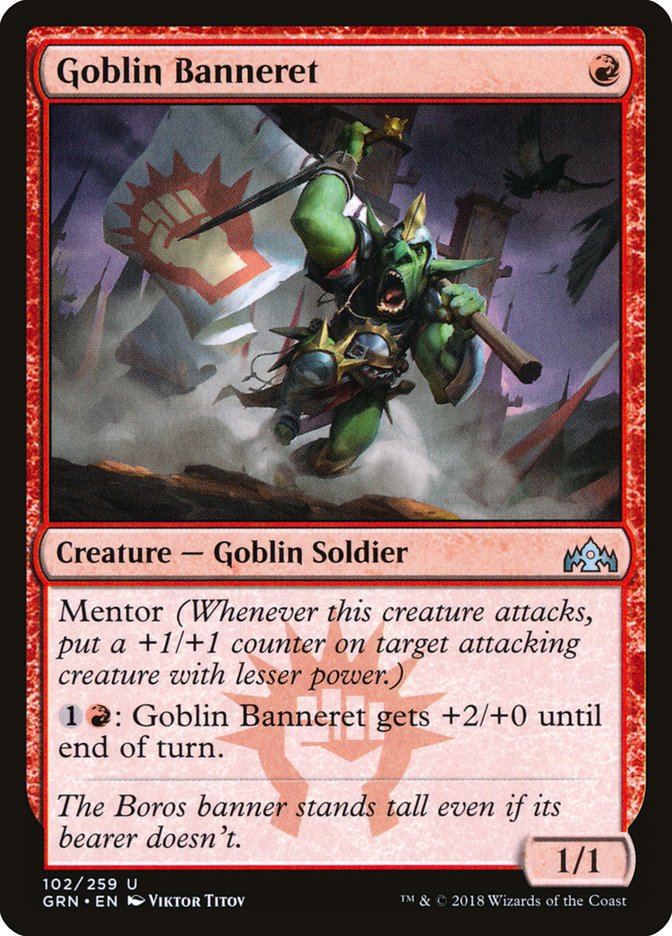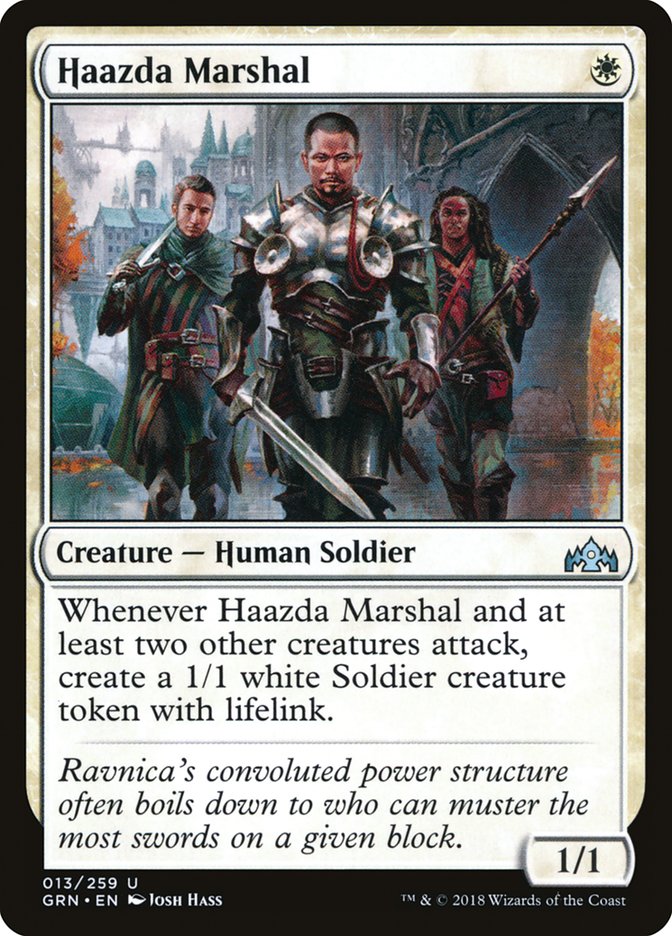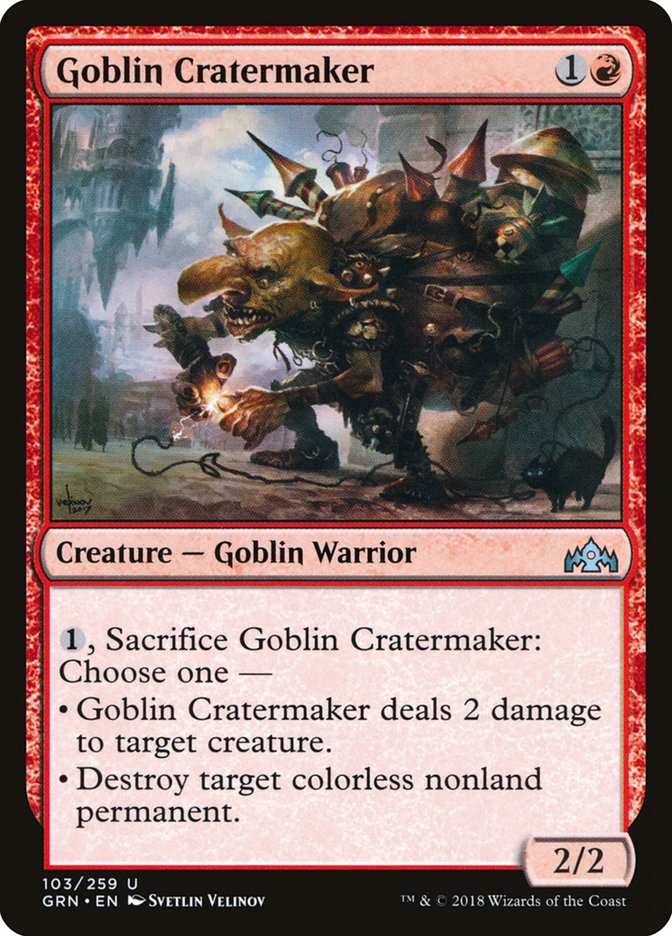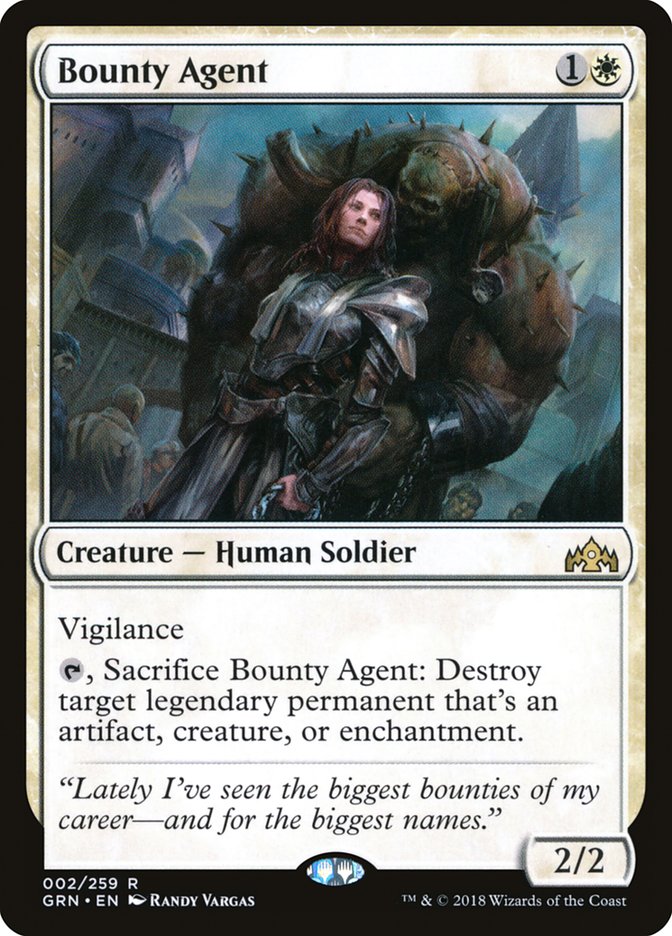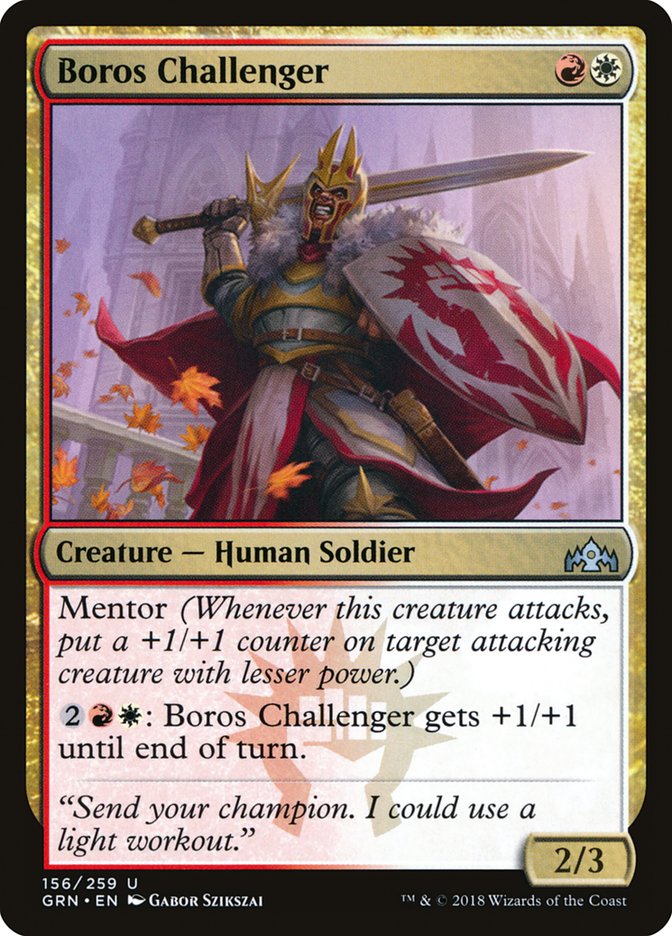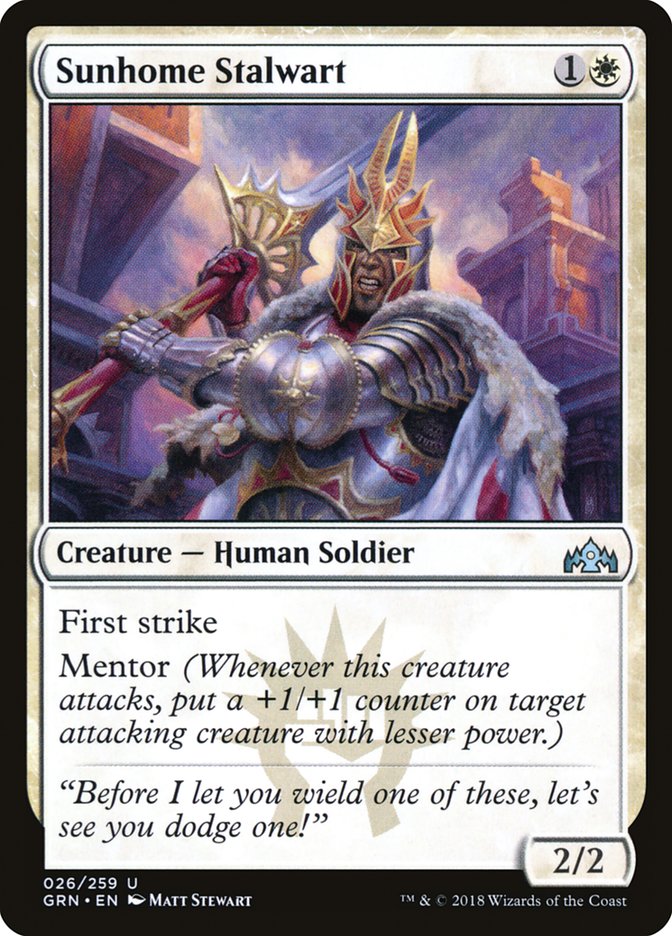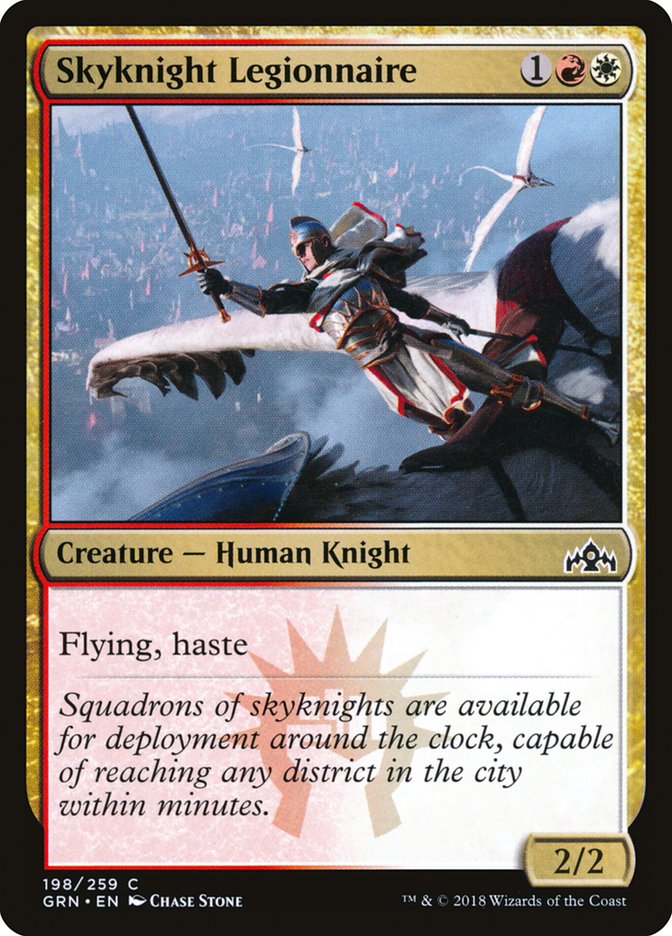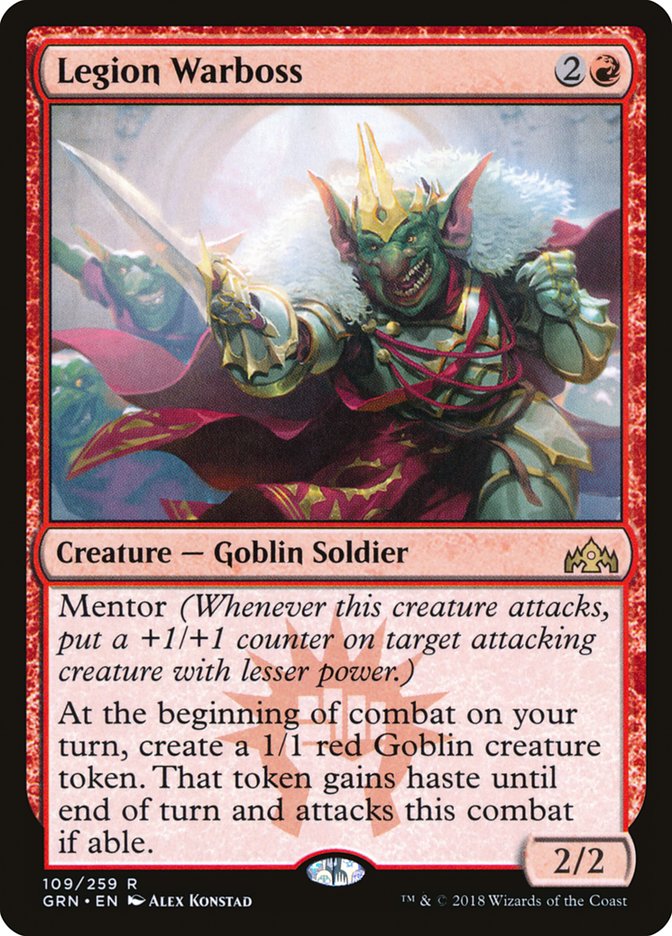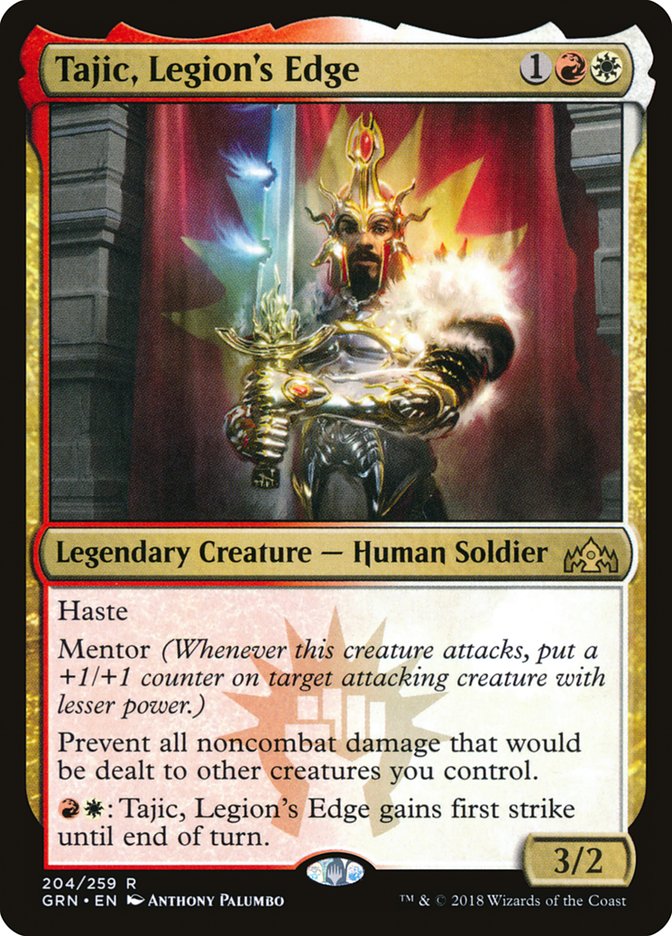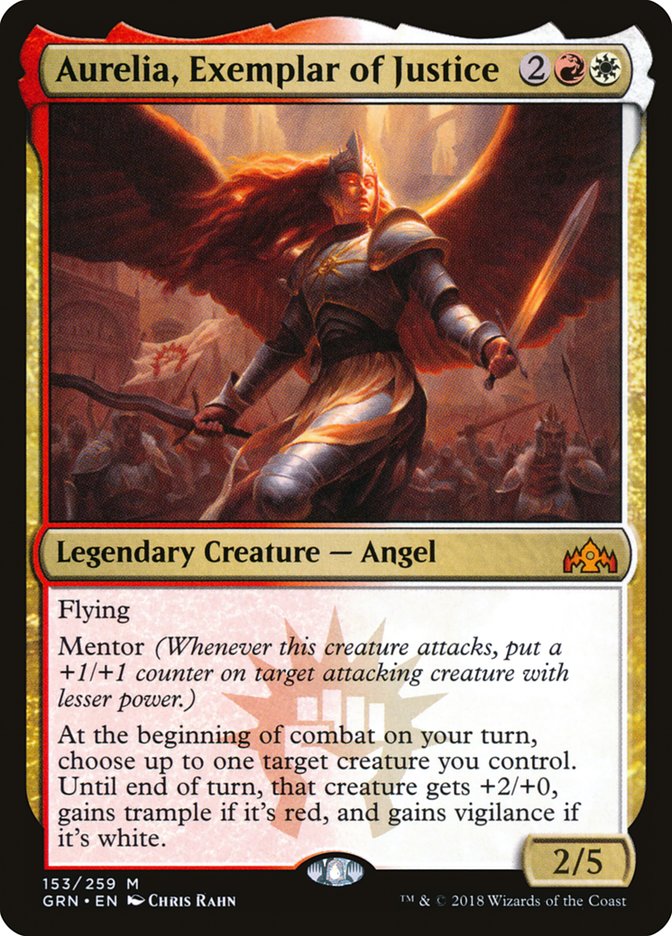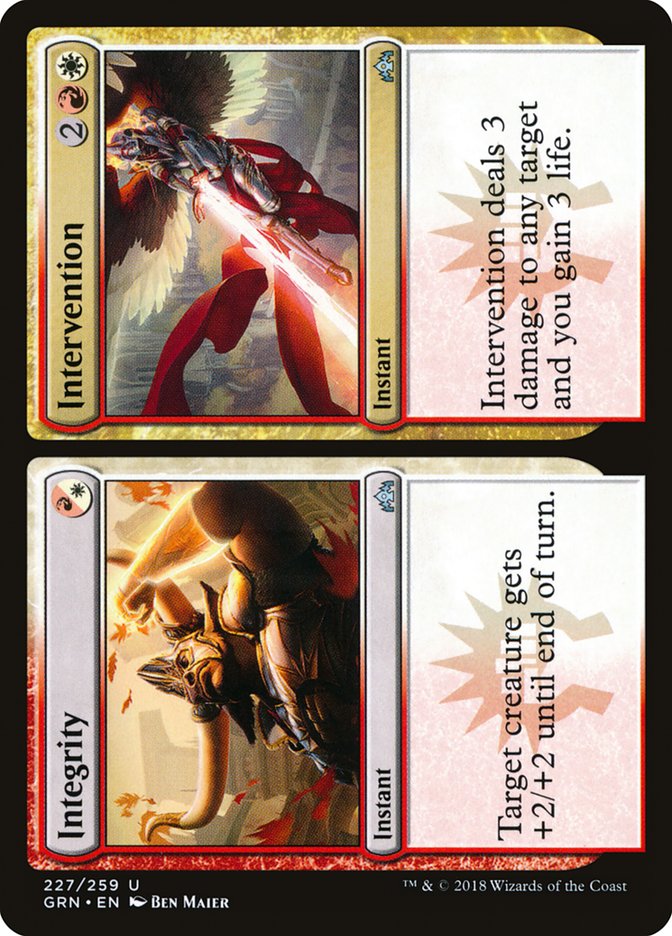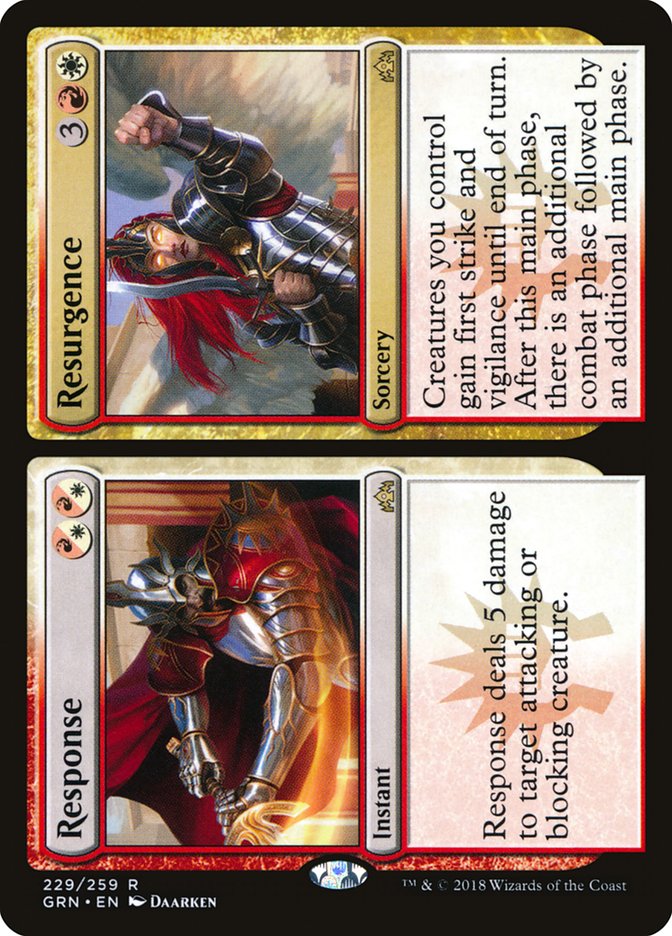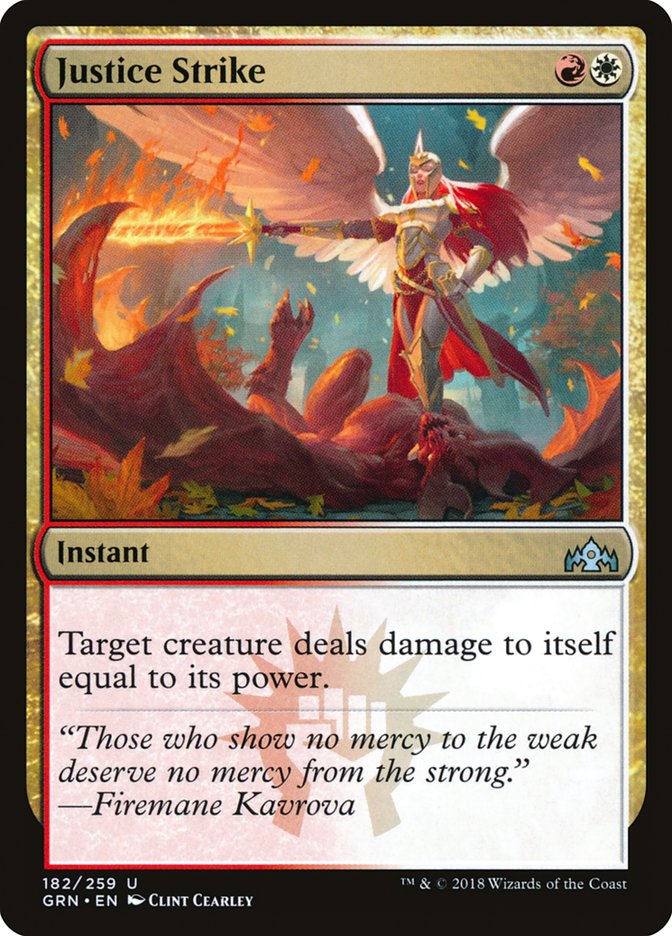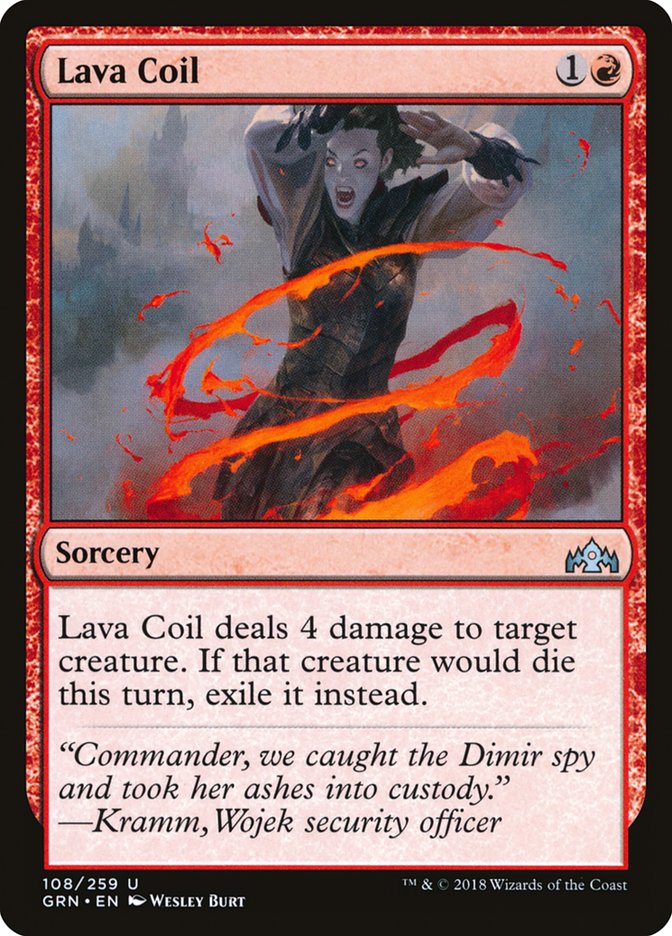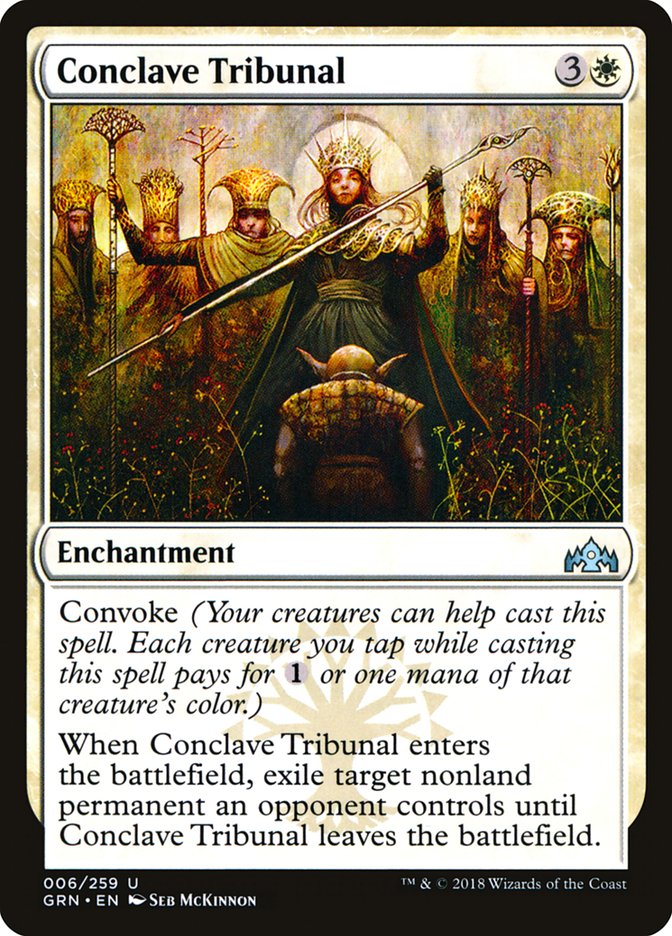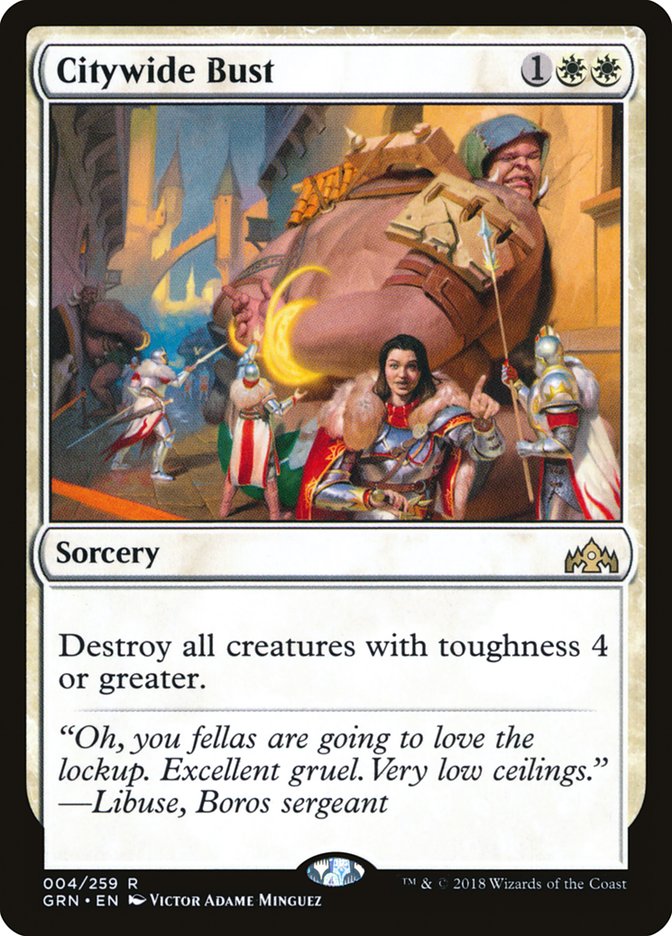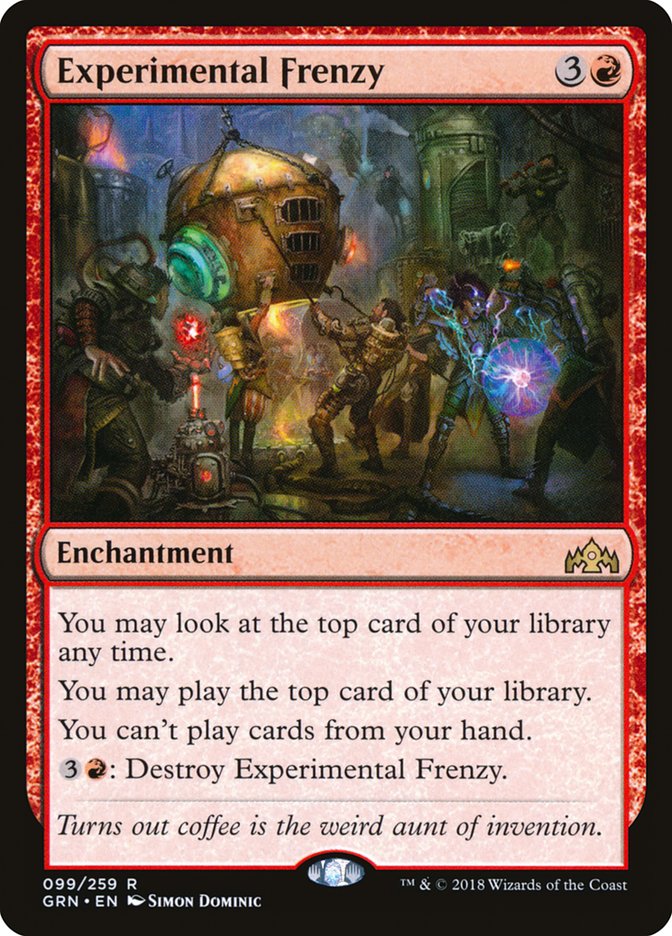We finally know all of the cards from Guilds of Ravnica with the
entire set being previewed yesterday. This looks to be a home run of a set
with not only plenty of cards that will shake up Standard but cards that
will also have impacts on non-rotating formats as well. Most of the
excitement early on in preview season centered on the Golgari with
Assassin’s Trophy and the Dimir with the ample amount of surveil cards.
However, another guild has caught my eye, one that I believe is the
strongest in the set:

Boros’ mechanic in Guilds of Ravnica, mentor, has been mostly
brushed aside as a limited-only afterthought. However, many of the cards
I’m going to talk about today either have mentor or are improved when
pairing it with cards that have it, which I believe will make mentor a
significant role-player in Standard. With that in mind, let’s talk about
many of the Boros cards from Guilds of Ravnica today to find out
why I’m so high on this guild overall, starting with the one-drops and
working our way up the curve.
Having quality one-drops is an essential part of an aggressive deck and
Goblin Banneret absolutely fits the bill. Being able to trade up with a
more expensive creature is a wonderful trait for a one-drop to have,
something Goblin Banneret can do easily with its activated ability. Goblin
Banneret not only has mentor, which will allow it to grow other creatures
due to its activated ability, but it also pairs extremely well with other
creatures that have mentor by starting as a 1/1. Each counter another
creature with mentor puts on Goblin Banneret not only makes it easier to
have it put counters on other creatures but also increases its ability to
trade with more expensive creatures or removal. This card is going to
surprise many people with how good it is.
Hunted Witness is unassuming for an aggressive deck because it’s usually
difficult to make a 1/1 with no abilities trade with another full card from
the opponent, but thankfully we have a convenient way to put +1/+1 counters
on it. This is a perfect card to mentor as your opponent will be forced to
trade with it eventually, giving you another creature to mentor. The more
mentor cards you have in your deck, the better Hunted Witness becomes.
If you can get to the point where you can attack with Haazda Marshal and
two other creatures and have Haazda Marshal survive combat, you probably
won’t need the extra creature token to win the game. I much prefer the
first two cards we’ve talked about so far and believe there are better
one-drops than this after those if you need more than eight in your deck.
Goblin Cratermaker’s value will be directly tied to the amount of two or
less toughness creatures and colorless nonland permanents. I’m not sold its
strong enough to start out in a Boros Aggro deck due to the amount of other
good cards in red and white, but if a card like Karn, Scion of Urza takes
over the format, Goblin Cratermaker will help keep it in check. For now I
like this at most as a sideboard card against artifact-heavy decks, if
those will exist, that you can bring back to the battlefield with Ajani,
Adversary of Tyrants, but keep this in mind when examining how the format
shakes out.
Bounty Agent is very similar to Goblin Cratermaker for me. If it was able
to destroy planeswalkers, I’d be much more excited, but as it stands Bounty
Agent will likely be a glorified Grizzly Bear much of the time. However, if
cards like Search for Azcanta, Nicol Bolas, the Ravager, and Lyra
Dawnbringer see wide-spread play in the format, Bounty Agent will become
more and more playable.
Double strike, vigilance, and trample? Wow! Swiftblade Vindicator
is quietly one of the best cards in Guilds of Ravnica and will be
the backbone of a Boros Aggro deck. This is the perfect card to mentor, as
each counter it receives makes it a bigger and bigger threat. Swiftblade
Vindicator can also take greater advantage of pump-spells like Integrity or
abilities that increase its power like Aurelia, Exemplar of Justice. Ajani,
Adversary of Tyrants can either return it from the graveyard to the
battlefield or put +1/+1 counters on it, which again turns it into an
incredible threat. Swiftblade Vindicator is the perfect two-drop for a
Boros Aggro deck and will be a defining card in Standard.
Boros Challenger is another playable two-drop for a Boros Aggro deck mostly
due to the power of mentor. A 2/3 for two is also a solid rate that has the
ability to get much better if you’re able to put a +1/+1 counter on it with
another mentor creature. I don’t expect to activate Boros Challenger’s
ability too often, but it’s always nice to have access to a mana sink in an
aggro deck when needed.
Sunhome Stalwart is very similar in power level to Boros Challenger, but
I’m going to give the nod to the multi-colored card. You’re trading one
point of toughness for first strike, which would arguably make Sunhome
Stalwart better depending on the removal of the format, but also losing the
activated ability of Boros Challenger is a big deal to me. Mentor is an
ability that rewards having creatures with a larger power than another when
attacking, and therefore, I want the activated ability to be able to grow
my creature.
While Skyknight Legionnaire is mostly looked at as a Limited card, I
wouldn’t be surprised if it found its way into Constructed. Evasion is an
important aspect for aggressive decks to have access to, making this a good
creature to Mentor. Skynight Legionnaire is certainly not an auto-include
for Boros Aggro, but don’t forget about it if the format features many
creatures that make it difficult to attack on the ground.
Legion Warboss has been rightfully compared to Goblin Rabblemaster by many,
with the overwhelming majority believing Goblin Rabblemaster to be the
better card. However, in a Boros Aggro deck that features plenty of mentor
cards like we’ve been talking about so far, I actually believe Legion
Warboss to be the more impactful card for the deck since each turn the 1/1
Goblin creature token you’re creating will likely be attacking as a 2/2.
Aurelia, Exemplar of Justice is another card that can turn the Goblin
creature tokens created by Legion Warboss into actual threats, provided you
have untapped with one. You aren’t able to create a token and immediately
pump it with Aurelia, since both triggers will go on the stack at the same
time and the Goblin token won’t be created before Aurelia will need to
target. Legion Warboss will absolutely be a four-of in every Boros Aggro
deck in Standard and is good enough that it will see play in Modern and
Legacy as well.
Yet another powerful card with mentor…I’m starting to see a trend here.
Tajic, Legion’s Edge most likely won’t be a four-of like Legion Warboss
because it’s legendary, but it still has plenty of good things going for
it. Starting with three power as a mentor is going to important with all
the other two-mana creatures mentioned before, and the ability to gain
first strike means it will be hard to block in combat. None of this even
considers the ability to protect all your other creatures from non-combat
damage which will work well with or against Deafening Clarion among other
cards. The number of strong cards for Boros Aggro just keep adding up, so
it probably can’t get better from here right?
Nevermind! Aurelia is incredible!
We have another creature with mentor, this time with flying, which also has
an ability that affects the battlefield immediately. While the ability to
give herself +2/+0, vigilance, and trample at the beginning of combat is
obviously very good, especially with mentor, I love that it’s another way
to allow your smaller creatures to trade up when your opponent has a
battlefield that wouldn’t otherwise be beneficial to attack into. Aurelia
is so good that I would start with four copies in my deck, even though it
is a legendary creature that costs four mana.
It looks like we already have quite the creature base for a Boros Aggro
deck just from this set alone, so let’s analyze some of the spells that are
available as well.
Integrity is the type of card that people won’t look twice at during
preview season but ends up being a solid Standard role player. Being able
to save your creature in combat for only one mana is traditionally a
valuable effect that we’ve seen from pump spells in the past, but with
mentor it’s even more important. Mentor incentivizes you to attack with
multiple creatures at once, meaning it’s likely the opponent will be able
to profitably trade with one of the attacking creatures and a pump spell
can change that. The downside to pump spells are when your opponent isn’t
interested in interacting during combat with other creatures or when you
don’t have a creature on the battlefield. Thankfully we will be able to use
Intervention in these cases to have a more expensive Lightning Helix,
meaning the downside of this card is minimal.
While Response, similar to Integrity, has many good qualities that you will
want in different situations, I’m not as sold on this card making the cut
for Boros Aggro. It will be at its best when your opponent is aggressive
and you can use Response to destroy an attacking creature, meaning this is
more likely a card that a control deck will want to play. I could see this
being a sideboard card for a Boros Aggro deck to bring in against other
aggro decks in case they’re behind that also can end the game with
Resurgence when you’re ahead.
I think we’ll have to wait in see what the metagame looks like for Justice
Strike, but I’m not too thrilled about the card. When you’re playing a
two-mana removal spell, you don’t want it to be conditional, and there are
likely too many creatures in the format that have more toughness than power
to want to play Justice Strike. I may be wrong here, and Justice Strike may
be a regular removal spell in the format similar to Cast Down, but I’m not
optimistic.
These are the two best single-color removal spells for red and white, but
I’m not a big fan of either for Boros Aggro. In order to want to play Lava
Coil over Lightning Strike, the fourth point of damage as well as the exile
clause have to be incredibly important. With how valuable instant speed and
the ability to deal damage to the opponent is, it’s highly unlikely Lava
Coil will be worth it. Conclave Tribunal will compete with Ixalan’s Binding
for the all-around removal spot, and I’m leaning toward Ixalan’s Binding.
Having the opponent not able to cast any other copy of the card you exile
is most likely more important than convoke for this deck, since you’ll want
to attack after using this effect to clear the way.
At first, I thought only a control deck would want Deafening Clarion,
similar to Response, but the more I think about it the more I like it in
the sideboard of Boros Aggro as well. There will certainly be games where
you’re behind and the sweeper effect can catch you back up, an effect
that’s even better if you have Tajic, Legion’s Edge on the battlefield.
When you’re at parity or slightly ahead, the ability to give all your
creatures lifelink can turn a race incredibly in your favor. This makes the
card a beneficial draw in most scenarios when playing a creature aggro
mirror, which is what you want in a sideboard card. These are two odd
abilities to put on the same card at first glance, but I’m becoming a
believer in Deafening Clarion.
Citywide Bust is an interesting card for aggressive decks to have access
to. Even casting it as a one-for-one with a card like Lyra Dawnbringer is a
beneficial trade, and the more popular green creature decks with
big creatures end up, the better this card is. Even though the flavor text
is telling you this is a Boros card, I’m personally more excited about it
in a Selesnya deck built around two-power value creatures and Militia
Bugler. For Boros, I’m expecting this to start with a small sideboard role,
increasing in value if Steel Leaf Champion and friends move to the front of
the format.
Experimental Frenzy is deceptively strong, and I’m very excited about this
card. You’ll want it to be the one of the last cards cast from your hand,
of course, since you won’t be able to play other cards in your hand, but it
then has the potential to allow you to play many cards each turn. Since it
says you may “play” the top card of your library, and not “cast” the top
card of your library, you’re able to play a land from your library as well.
This means that each turn you should effectively be able to not only hit
your land drop but play each other card until you reveal a second land
since you won’t be able to play two lands in a turn. When you go to your
next turn you will draw the land on top of your deck and proceed to play
cards until you reveal your second land again. It won’t matter that you
can’t play the card in your hand since it will be a land and you’re hitting
land drops anyway.
Yes, there will certainly be turns where you don’t have enough mana to cast
the couple spells before you find your second land, and that you may have
to draw a spell you otherwise wanted to cast, but over the long run, you’ll
be playing more than two cards on average over each of your turns with
Experimental Frenzy on the battlefield, allowing you to out-grind midrange
and control decks. I think this is another card that’s under-the-radar now,
but when people start playing with it, they’ll realize its power level.
With all of this in mind, here’s the Boros Aggro deck I’m starting with for Guilds of Ravnica Standard testing, which you will see on Live VS
today on twitch.tv/SCGTour at 1:00pm ET!
Creatures (26)
- 4 Boros Challenger
- 4 Legion Warboss
- 4 Goblin Banneret
- 4 Aurelia, Exemplar of Justice
- 3 Hunted Witness
- 4 Swiftblade Vindicator
- 3 Tajic, Legion's Edge
Planeswalkers (2)
Lands (24)
Spells (8)

As you can tell, this Boros Aggro deck is composed of almost entirely Guilds of Ravnica cards in the maindeck because of the synergy
that all of the creatures with mentor have with each other. Each individual
creature has a textbox filled with different abilities that allow it to
have various impact on the game, which is exactly where you want to be with
a deck full of creatures. I’m really liking the look of Boros Aggro as of
now and believe Boros has a strong case to be the best guild from Guilds of Ravnica.


